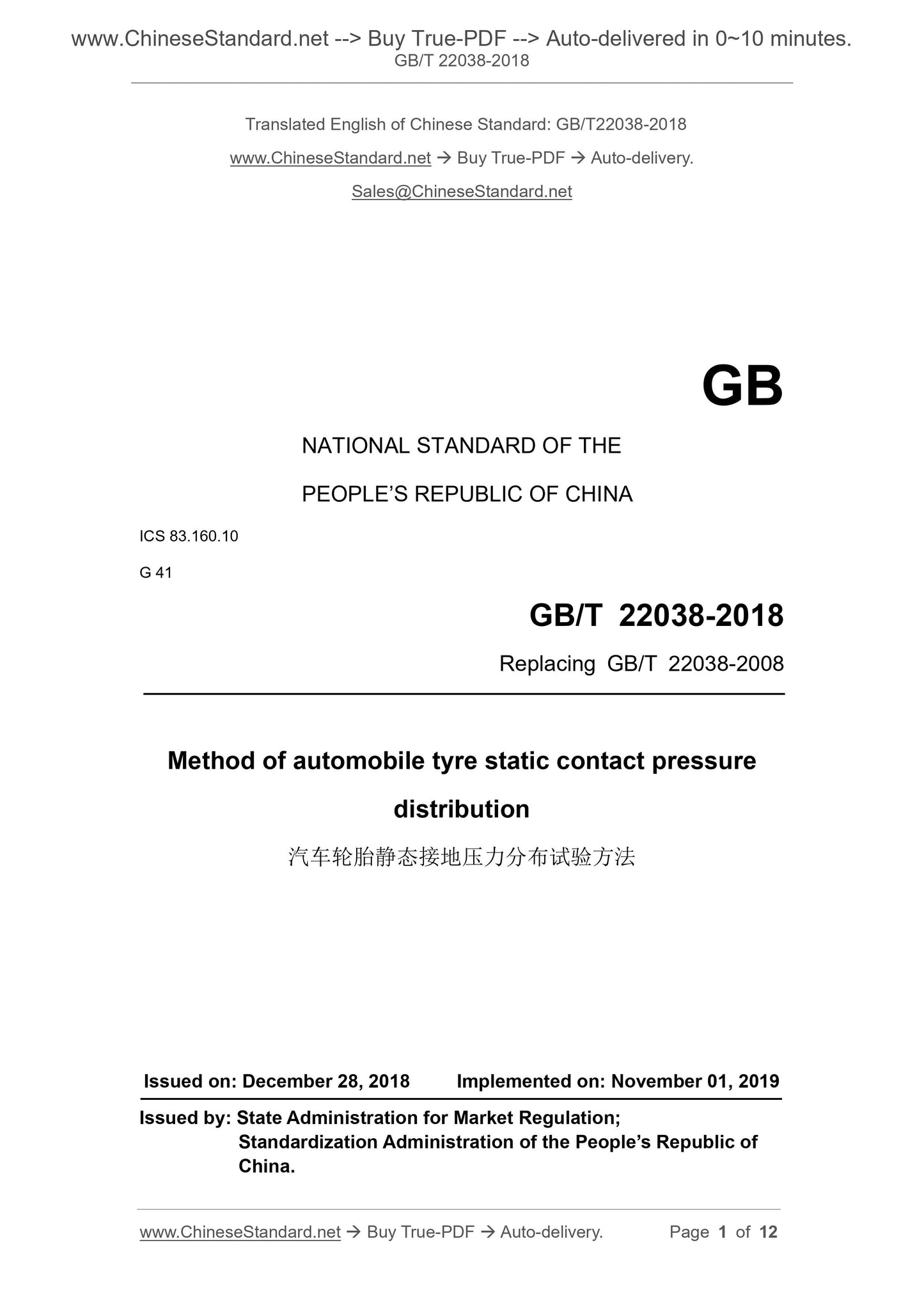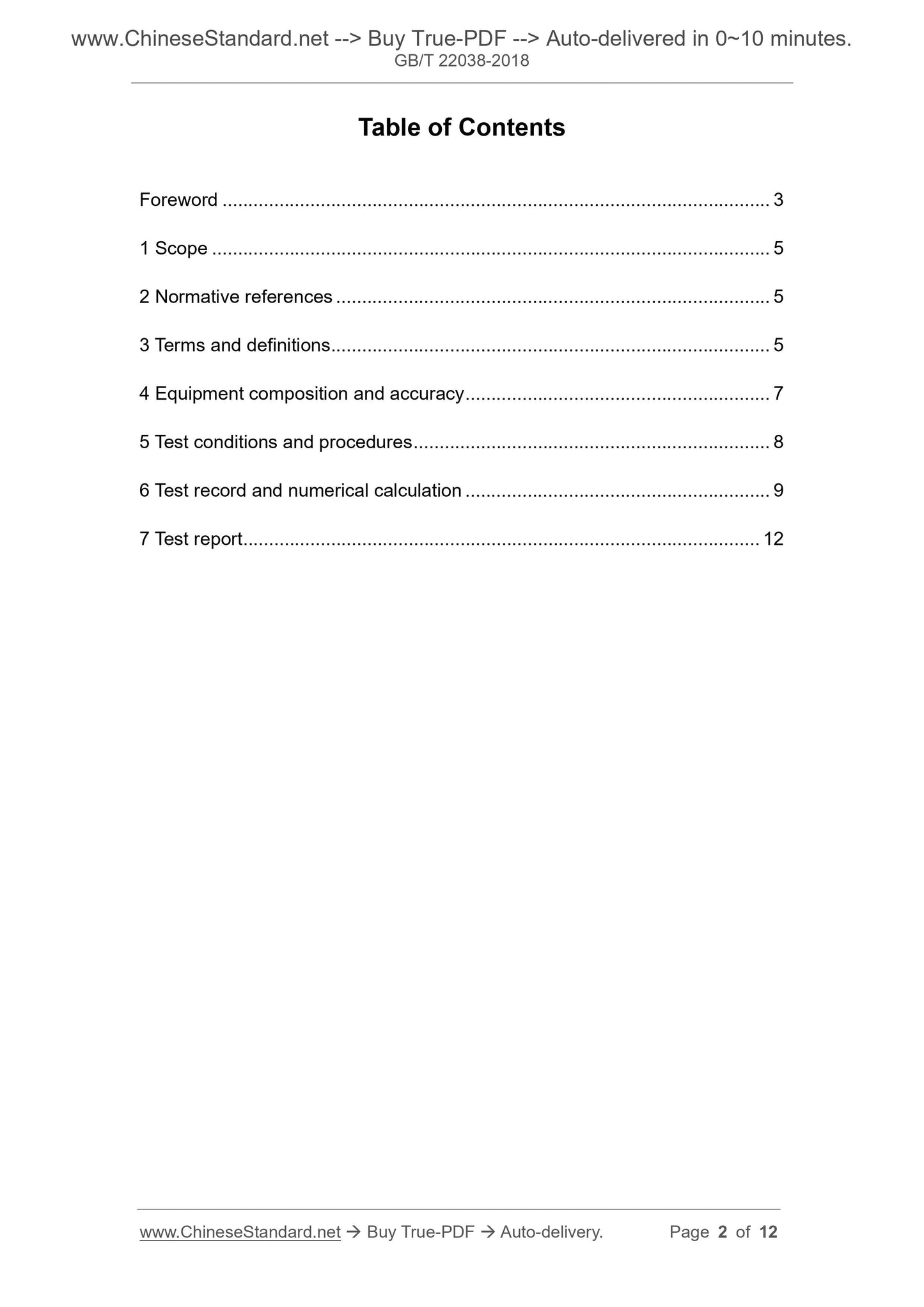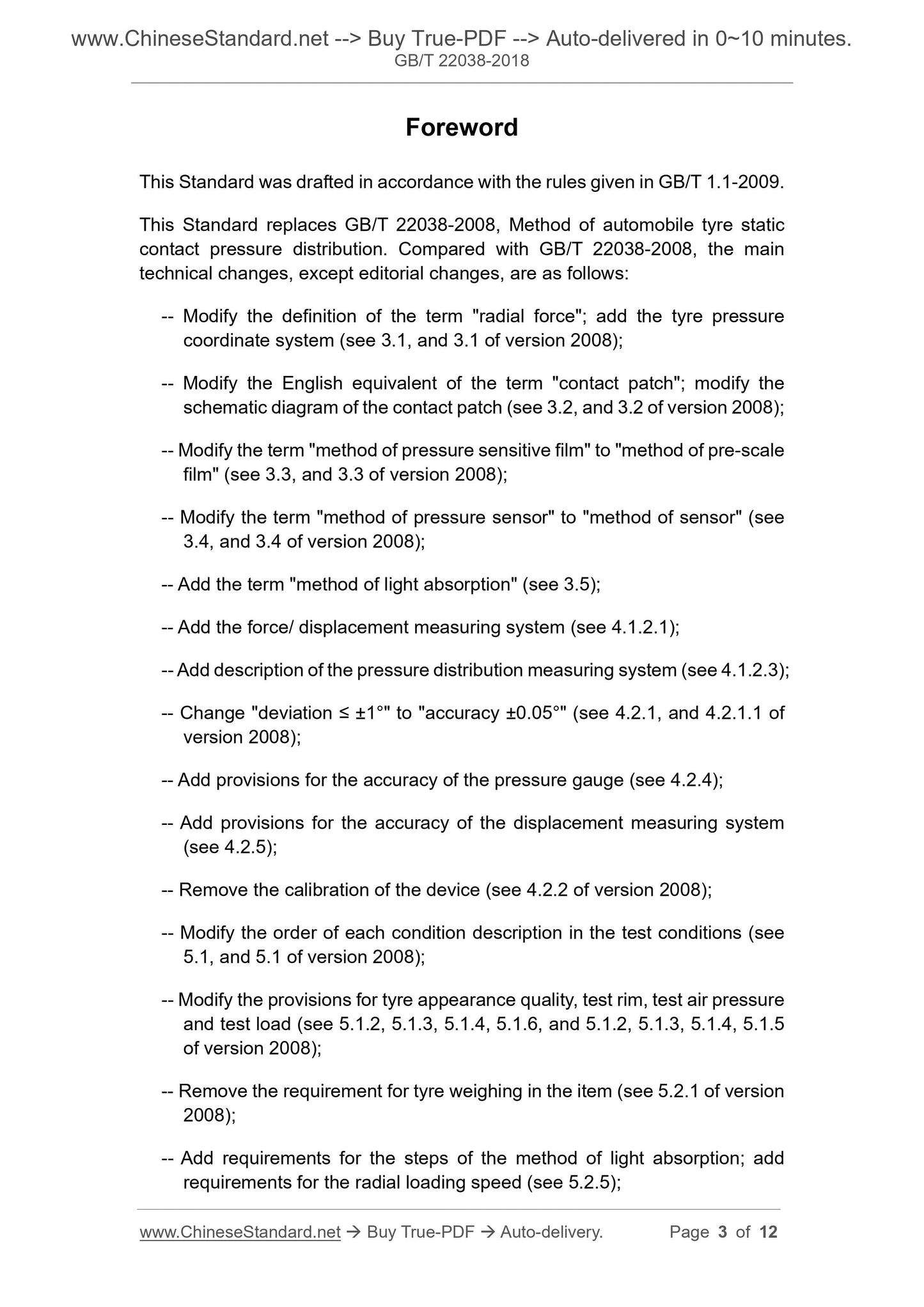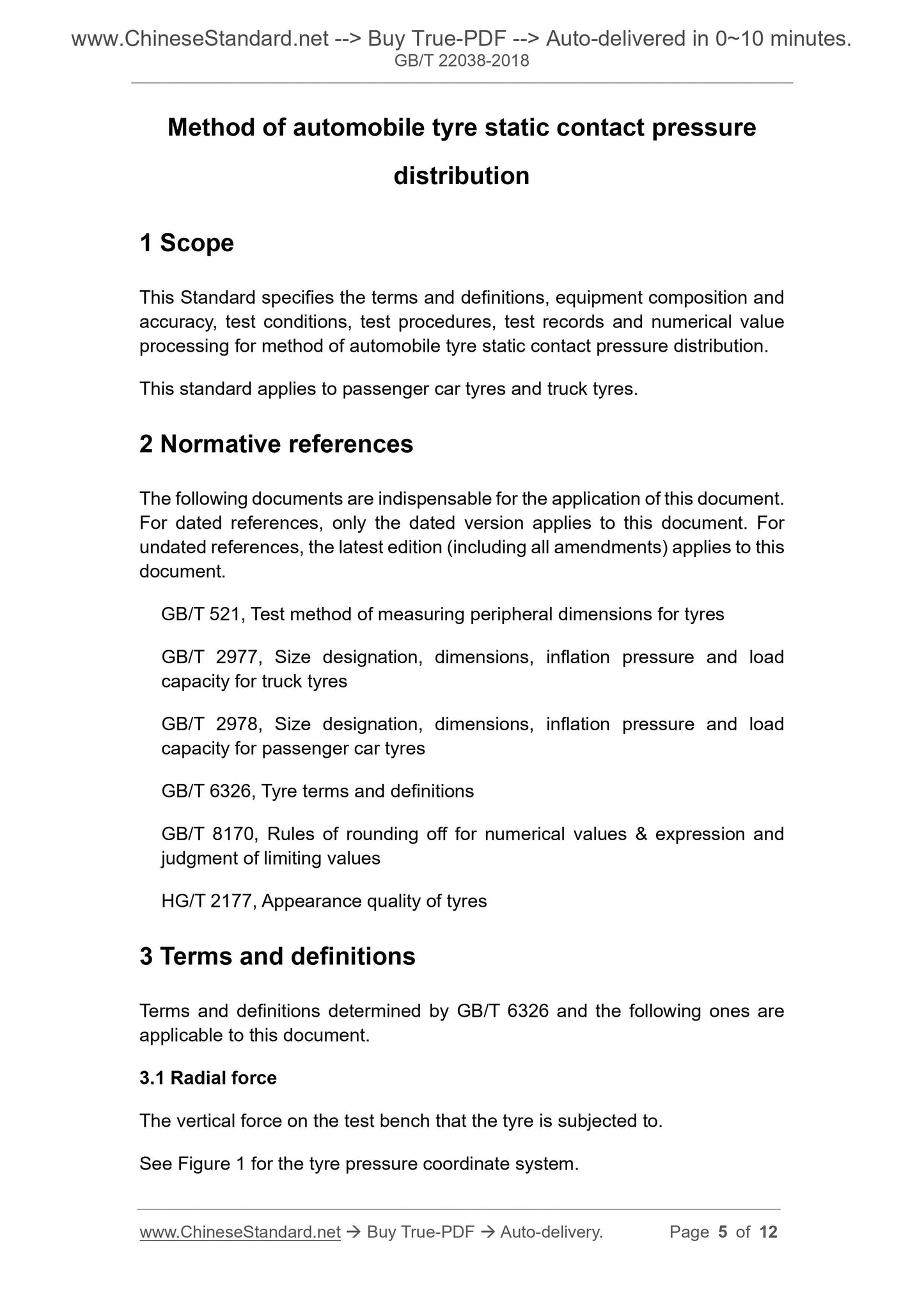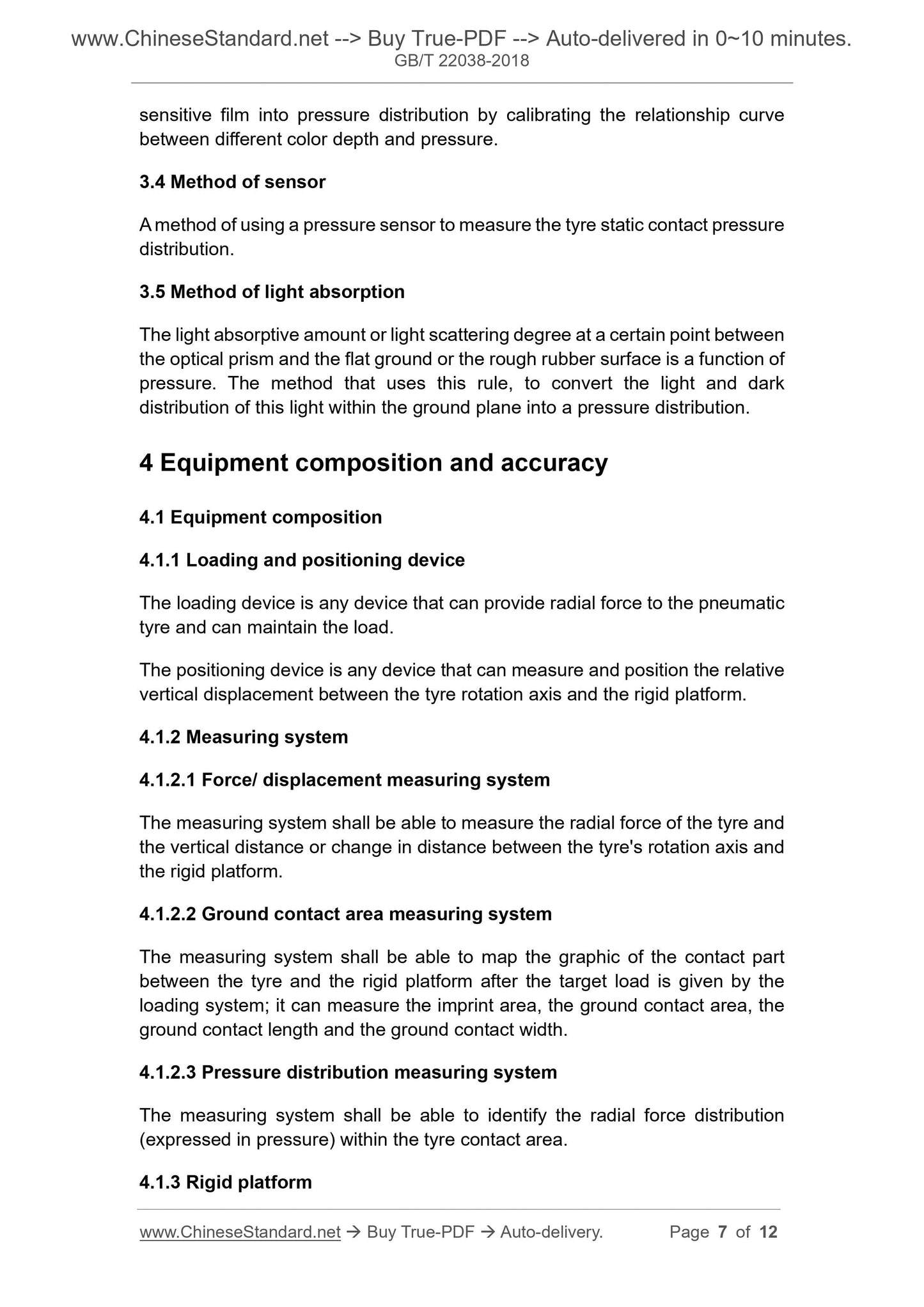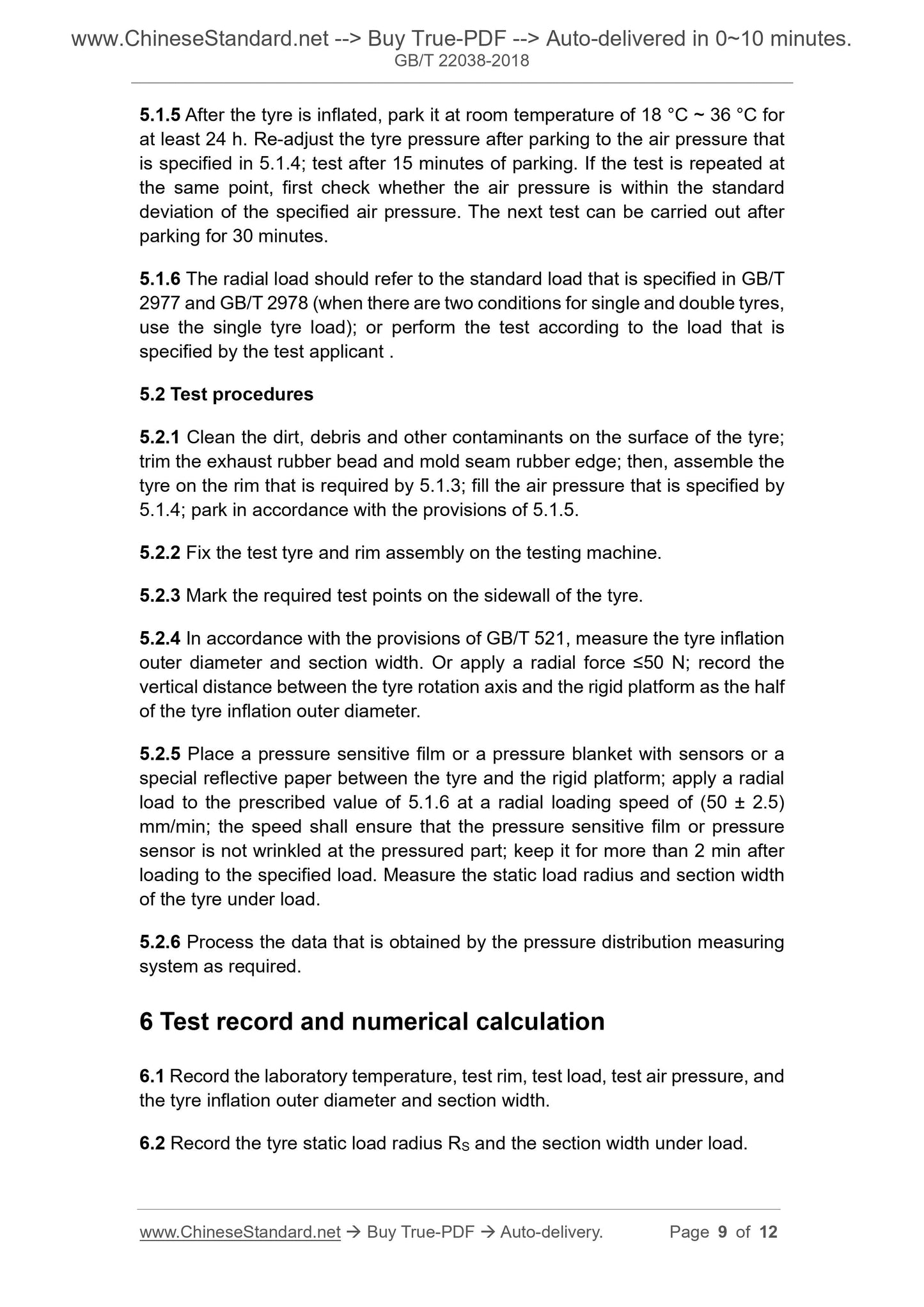1
/
of
6
www.ChineseStandard.us -- Field Test Asia Pte. Ltd.
GB/T 22038-2018 English PDF (GB/T22038-2018)
GB/T 22038-2018 English PDF (GB/T22038-2018)
Regular price
$150.00
Regular price
Sale price
$150.00
Unit price
/
per
Shipping calculated at checkout.
Couldn't load pickup availability
GB/T 22038-2018: Method of automobile tyre static contact pressure distribution
Delivery: 9 seconds. Download (and Email) true-PDF + Invoice.Get Quotation: Click GB/T 22038-2018 (Self-service in 1-minute)
Newer / historical versions: GB/T 22038-2018
Preview True-PDF
Scope
This Standard specifies the terms and definitions, equipment composition andaccuracy, test conditions, test procedures, test records and numerical value
processing for method of automobile tyre static contact pressure distribution.
This standard applies to passenger car tyres and truck tyres.
Basic Data
| Standard ID | GB/T 22038-2018 (GB/T22038-2018) |
| Description (Translated English) | Method of automobile tyre static contact pressure distribution |
| Sector / Industry | National Standard (Recommended) |
| Classification of Chinese Standard | G41 |
| Classification of International Standard | 83.160.10 |
| Word Count Estimation | 10,172 |
| Date of Issue | 2018-12-28 |
| Date of Implementation | 2019-11-01 |
| Older Standard (superseded by this standard) | GB/T 22038-2008 |
| Regulation (derived from) | National Standard Announcement No. 17 of 2018 |
| Issuing agency(ies) | State Administration for Market Regulation, China National Standardization Administration |
Share
